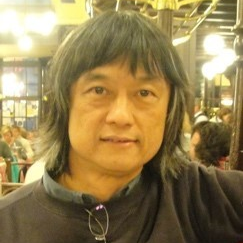Recent Advances in Nanodiamond and Nanocarbon
A special issue of Materials (ISSN 1996-1944). This special issue belongs to the section "Carbon Materials".
Deadline for manuscript submissions: closed (20 May 2023) | Viewed by 10360
Special Issue Editors
Interests: nanobiotechnology; nano materials; diamond and carbon related materials; Fourier transform spectroscopy; Raman spectroscopy; surface and material sciences
Interests: nanodiamond and nano-carbon physical-chemical properties; carbon and plasmonic nanostructures bioapplication; nanoparticles interaction with biological systems and nanosafety; applications of luminescence spectroscopy and raman spectroscopy in bio-medical research; high resolution optical microscopy; biological imaging and visualization in micro- and nanoscale
Special Issue Information
Dear Colleagues,
Carbon nanomaterials including nanodiamond, ultrananocrystalline diamond (UNCD) thin films, carbon nanodots, nanocarbon particles, etc. exhibit remarkable potential in diverse areas of research and application owing to their unique material, physical, optical, and surface chemical properties. In the last two decades, increasing attention has been given to carbon nanomaterials, which has led to versatile new applications in surface coatings, quantum information and semiconductor devices, and surface functionalization for various applications in bio-imaging and drug delivery. For these applications, the growth and characterization of materials are crucial.
This Special Issue aims to cover recent advances in the field of carbon nanostructure, ranging from material growth/production and characterization to applications and beyond. The optimization of nanodiamond production/deposition methods, thin film preparations, dispersed nanoparticles, functionalization of surfaces with targeted applications, nanosensors, catalysis, electronic devices, and biocidal coating highlight the development of this material. The latest advances in defect engineering and color center on nanodiamond, quantum technology based on carbon and boron nitrides, as well as devices for power electronics, energy harvest/storage photoelectronics, and sensors. Surface functionalization for bio-imaging and drug delivery, and targeting applications in cellular, animal, and tissue models combining the multimodalities of nanodiamond and detection technology, such as FLIM, OCT, etc., are of interest as they are representative of the potential for specific and controlled drug targeting/delivery, reduced toxicity while maintaining therapeutic effects, and development of new and safer medicine, which are of vital importance to medicine and healthcare.
Prof. Dr. Chia-Liang Cheng
Dr. Elena Perevedentseva
Guest Editors
Manuscript Submission Information
Manuscripts should be submitted online at www.mdpi.com by registering and logging in to this website. Once you are registered, click here to go to the submission form. Manuscripts can be submitted until the deadline. All submissions that pass pre-check are peer-reviewed. Accepted papers will be published continuously in the journal (as soon as accepted) and will be listed together on the special issue website. Research articles, review articles as well as short communications are invited. For planned papers, a title and short abstract (about 100 words) can be sent to the Editorial Office for announcement on this website.
Submitted manuscripts should not have been published previously, nor be under consideration for publication elsewhere (except conference proceedings papers). All manuscripts are thoroughly refereed through a single-blind peer-review process. A guide for authors and other relevant information for submission of manuscripts is available on the Instructions for Authors page. Materials is an international peer-reviewed open access semimonthly journal published by MDPI.
Please visit the Instructions for Authors page before submitting a manuscript. The Article Processing Charge (APC) for publication in this open access journal is 2600 CHF (Swiss Francs). Submitted papers should be well formatted and use good English. Authors may use MDPI's English editing service prior to publication or during author revisions.
Keywords
- carbon nanostructure growth and characterization
- chemical/physical properties of carbon nanostructure
- diamond electronic engineering
- power device and energy storage
- photoelectronic and devices
- defect centers and manipulation
- spintronic of defect centers
- quantum computing and devices
- surface of nanodiamond and bioconjugation
- nanodiamond for bio-imaging
- biomedical application of nanodiamond
- controlled drug delivery







